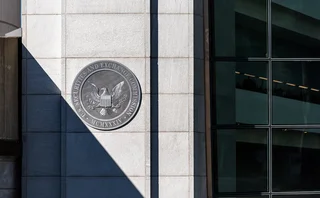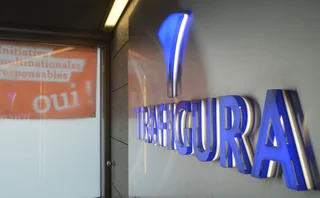
BCBS chairman speaks out on recent events
Nout Wellink speaks on the implications for risk managers of the current market turmoil at the GARP conference
NEW YORK – Nout Wellink, President of De Nederlandsche Bank and chairman of the Basel Committee on Banking Supervision, told delegates at the Global Association of Risk Professionals (GARP) annual risk management conference that there were three fundamental shortcomings that contributed to and amplified the turmoil. These were the failure of the subprime mortgage lending market to employ sound underwriting standards, which was amplified by the fact that firms “also neglected to define prudent firm-wide risk limits on these exposures”; the failure of risk management and measurement capabilities to keep up with the rapid pace of financial innovation; and that certain aspects of regulation, supervision and market transparency “failed to reflect financial market developments and therefore contributed to weak practices at banks”.
Wellink was keen to point out that the crisis played out under the outdated Basel I supervisory rules, which was simply unable to accurately capture the “types of risks that banks face in today’s increasingly market-based credit intermediation environment. As a result, off-balance-sheet exposures as well as operational, legal and reputational risks were not appropriately identified and measured”. He also admitted that liquidity supervision and regulation had failed to keep up with banks’ changing risk profiles and growing vulnerability to market-based shocks. These factors, he said, “underscore the need for Basel II and the necessity to continuously improve the framework”.
The Basel Committee is working on three initiatives, which are the implementation of and further improvements to Basel II; enhancing global standards for liquidity risk management and supervision; and strengthening other risk management practices, particularly with respect to stress testing and valuations.
Improvements to Basel II identified by Wellink concern the Pillar 1 capital treatment of certain securitisations of complex products, where most banks lost money, but also in Pillar 2 the committee aims to make sure that banks “perform adequate stress tests and hold capital for uncertainties related to exposures coming back to the balance sheet for legal, reputational or liquidity reasons”, and also to build on Pillar 3 disclosure requirements in order to “strengthen banks’ transparency around exposures to structured credit products and securitised assets, including banks’ involvement as sponsors”.
“There are no simple, quick-fix measures that will prevent the next crisis. But I believe that the steps I have outlined will make the banking sector more resilient to the next set of shocks, whatever their source,” said Wellink.
Only users who have a paid subscription or are part of a corporate subscription are able to print or copy content.
To access these options, along with all other subscription benefits, please contact info@risk.net or view our subscription options here: http://subscriptions.risk.net/subscribe
You are currently unable to print this content. Please contact info@risk.net to find out more.
You are currently unable to copy this content. Please contact info@risk.net to find out more.
Copyright Infopro Digital Limited. All rights reserved.
As outlined in our terms and conditions, https://www.infopro-digital.com/terms-and-conditions/subscriptions/ (point 2.4), printing is limited to a single copy.
If you would like to purchase additional rights please email info@risk.net
Copyright Infopro Digital Limited. All rights reserved.
You may share this content using our article tools. As outlined in our terms and conditions, https://www.infopro-digital.com/terms-and-conditions/subscriptions/ (clause 2.4), an Authorised User may only make one copy of the materials for their own personal use. You must also comply with the restrictions in clause 2.5.
If you would like to purchase additional rights please email info@risk.net
More on Risk management
SEC leadership change puts Treasuries mandate under scrutiny
FICC clearing models approved, but critics think delay could revive prospects of done-away trading
Markets Technology Awards 2025: Untangling the knots
Vendors jockeying for position in this year’s MTAs, as banks and regulators take aim at counterparty blind spots
Risk Awards 2025: The winners
UBS claims top derivatives prize, lifetime award for Don Wilson, JP Morgan wins rates and credit
An AI-first approach to model risk management
Firms must define their AI risk appetite before trying to manage or model it, says Christophe Rougeaux
BofA sets its sights on US synthetic risk transfer market
New trading initiative has already notched at least three transactions
Op risk data: At Trafigura, a $1 billion miss in Mongolia
Also: Insurance cartels, Santander settlement and TSB’s “woeful” customer treatment. Data by ORX News
Cyber risk can be modelled like credit risk, says Richmond Fed
US supervisors may begin to use historical datasets to assess risk at banks and system-wide
The changing shape of risk
S&P Global Market Intelligence’s head of credit and risk solutions reveals how firms are adjusting their strategies and capabilities to embrace a more holistic view of risk







